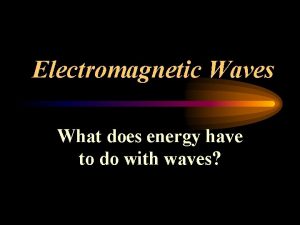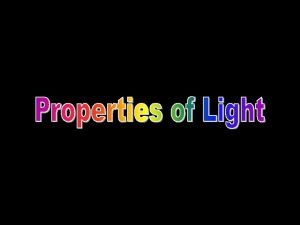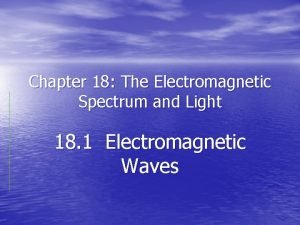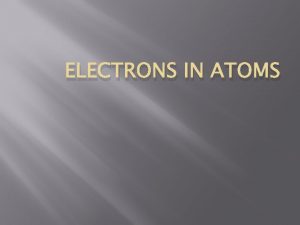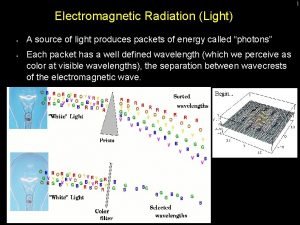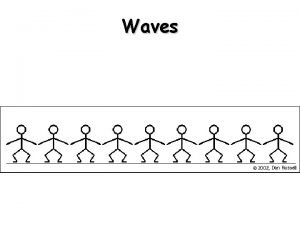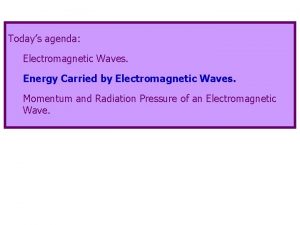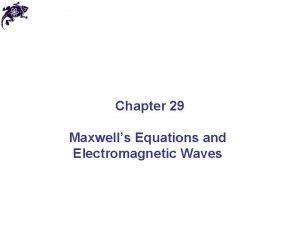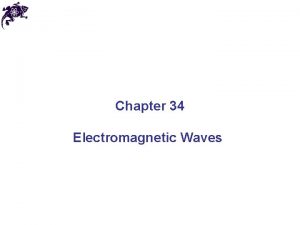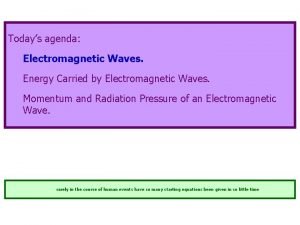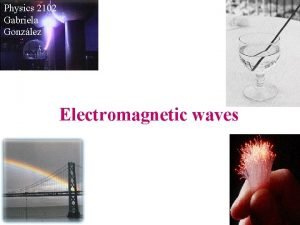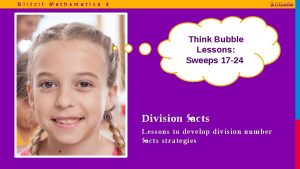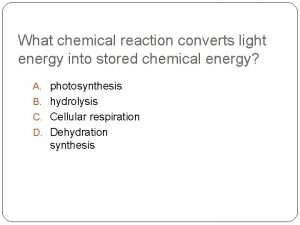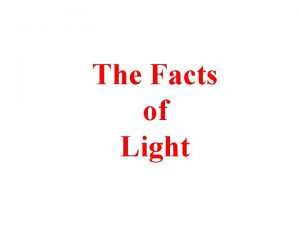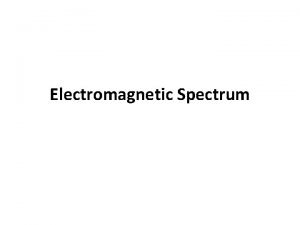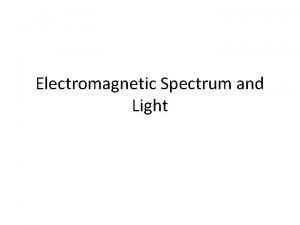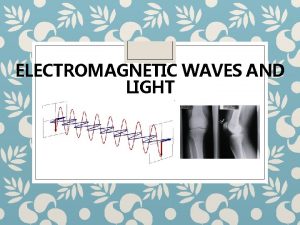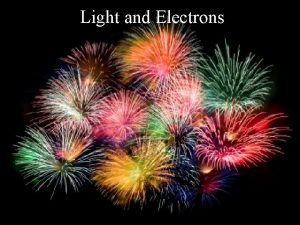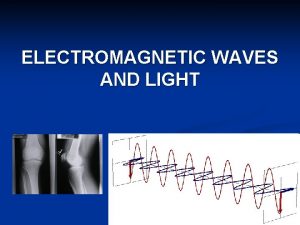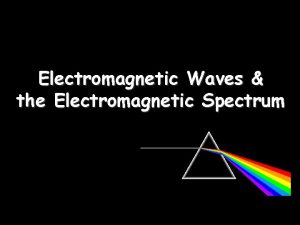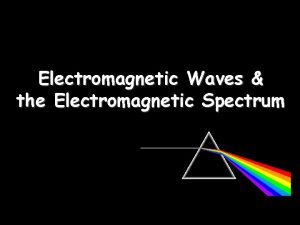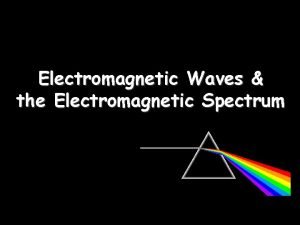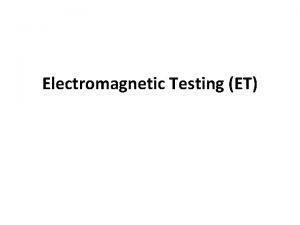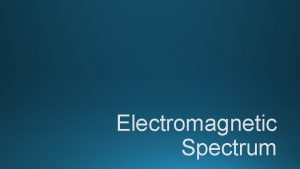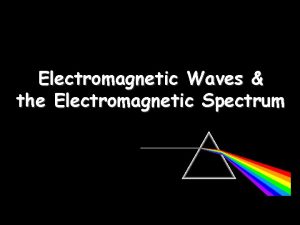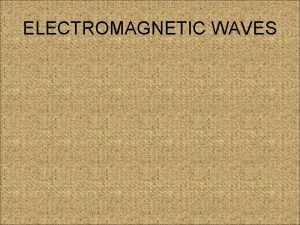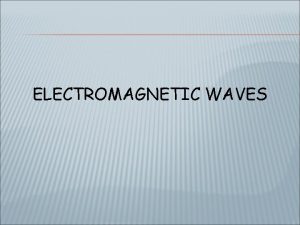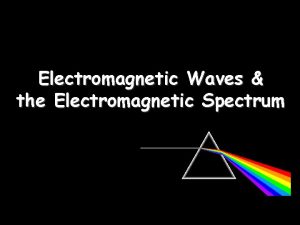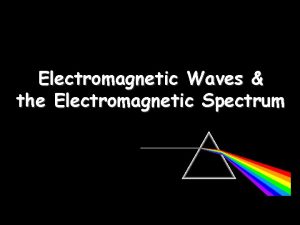Light Facts l Light is energy electromagnetic energy




















- Slides: 20

Light

Facts l Light is energy – electromagnetic energy (energy that is electric and magnetic) l Travels in a straight path unless…it goes through a new material (medium) then it may bend or slow down l Travels in waves l Travels VERY fast! l The speed of light: 3 x 108 m/s

How fast is 3 x 108 metres per second?

l When light hits a surface, it bounces or REFLECTS off the surface. l If light hits a smooth surface, it will bounce at a predictable angle. l If light hits a rough surface, it bounces off at all kinds of angles.

Look at how the surface affects these water reflections.

The Law of Reflection states that: the angle of incidence (i) equals the angle of reflection (r) -

Concave mirrors l curve inward - like a “cave” ¡Close up – image is enlarged, right-side up. ¡Further away – image is enlarged, but upsidedown. ¡The further away you move, the smaller the image gets.

Concave mirrors cause rays to CONVERGE and meet at a focal point

Convex Mirrors l curve outward l The image is always smaller and right-side up. l Used for side view mirrors on cars, security mirrors to prevent shoplifting, and on tight bends in the road to give a wide angle of view.

Convex mirrors cause rays to DIVERGE or spread out.


Which is convex? Which is concave?

How light passes through objects l Opaque ¡ completely blocks light from coming through l Translucent ¡ Lets only part of the light through ¡ View is blurry l Transparent ¡ Allows light to pass through with almost no disturbance ¡ Can be clear or colored ¡ Clear view

l Lenses – curved transparent materials that refract (bend) light to make images l Convex lenses ¡Curve out ¡Light rays bend together after passing through ¡“e” in convex = together focal length

Convex lens – the rays bend together • If the lens is close to your eye, the image you see will be right-side up and enlarged. • If the lens is further away, the image will be upside down.

Concave Lenses l Curves inward (like a cave) l Light rays pass through and move apart l “a” in concave = apart

Concave Lens l The image you see is always smaller and right-side up.

What would happen if you put both of them together? l Hmm…. .

Blind spot

Parts of the eye and their functions l Cornea – thin clear covering over the front of the eye. l Pupil – hole in the centre of the iris, it changes size in bright light and dull light l Iris – coloured part of the eye, makes the pupil bigger or smaller l Lens – focuses light onto the retina l Retina – cells at the back of the eye that can detect light l Optic nerve – carries message from the retina to the brain.
 Facts about electromagnetic radiation
Facts about electromagnetic radiation Light light light chapter 23
Light light light chapter 23 Into the light chapter 22
Into the light chapter 22 Chapter 22
Chapter 22 Light is an electromagnetic wave true or false
Light is an electromagnetic wave true or false Cl orbital notation
Cl orbital notation Chapter 18 the electromagnetic spectrum and light
Chapter 18 the electromagnetic spectrum and light Light electromagnetic
Light electromagnetic Light electromagnetic
Light electromagnetic Electromagentic spectrum
Electromagentic spectrum Electromagnetic energy
Electromagnetic energy Energy density in em waves
Energy density in em waves Maxwell theory
Maxwell theory Hertz experiment electromagnetic waves
Hertz experiment electromagnetic waves Energy carried by electromagnetic waves
Energy carried by electromagnetic waves Intensity of electromagnetic wave
Intensity of electromagnetic wave Multiplication facts and division facts
Multiplication facts and division facts ________ converts light energy into chemical energy. *
________ converts light energy into chemical energy. * Photosynthesis transforms light energy into chemical energy
Photosynthesis transforms light energy into chemical energy Facts about light
Facts about light Facts about light
Facts about light
